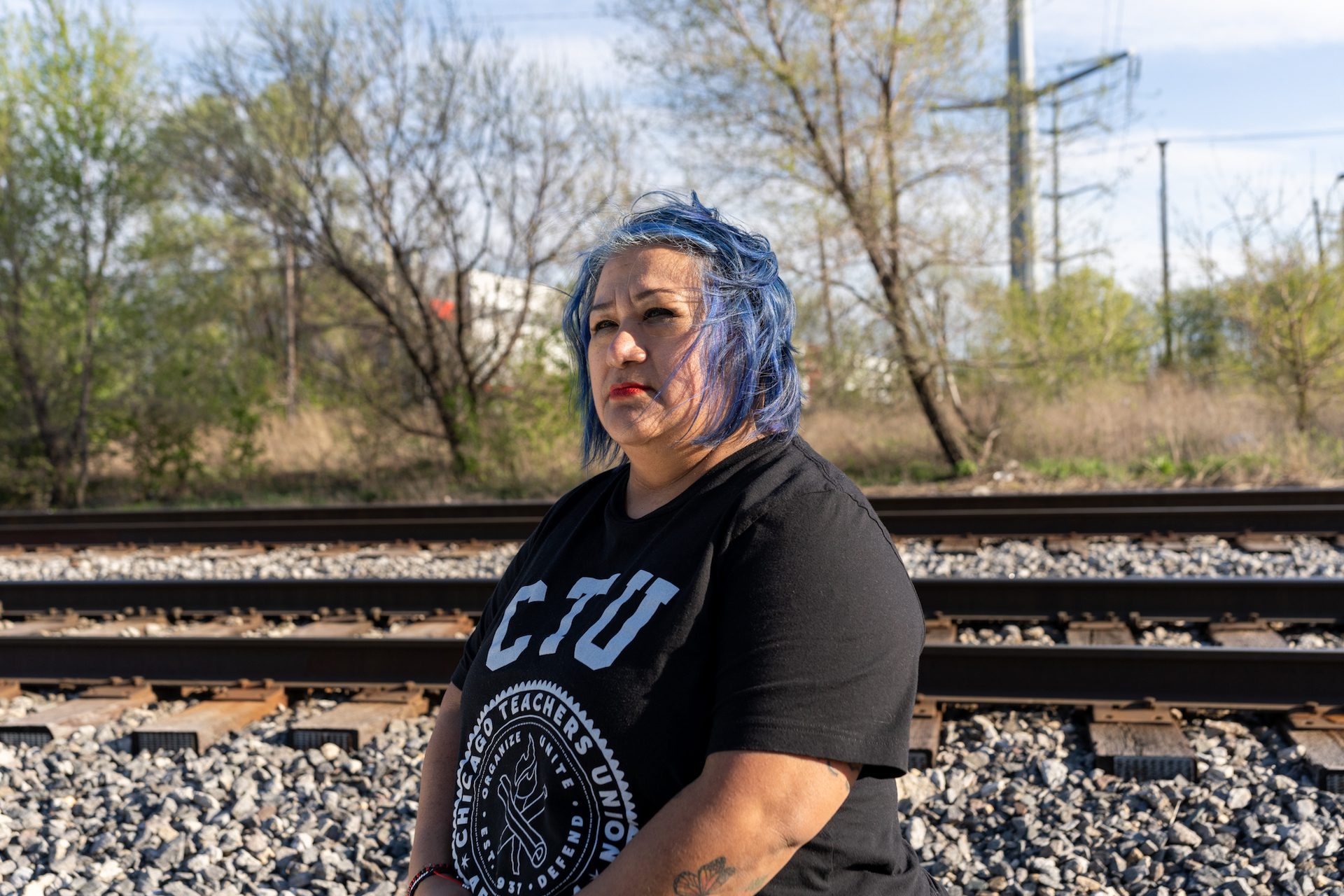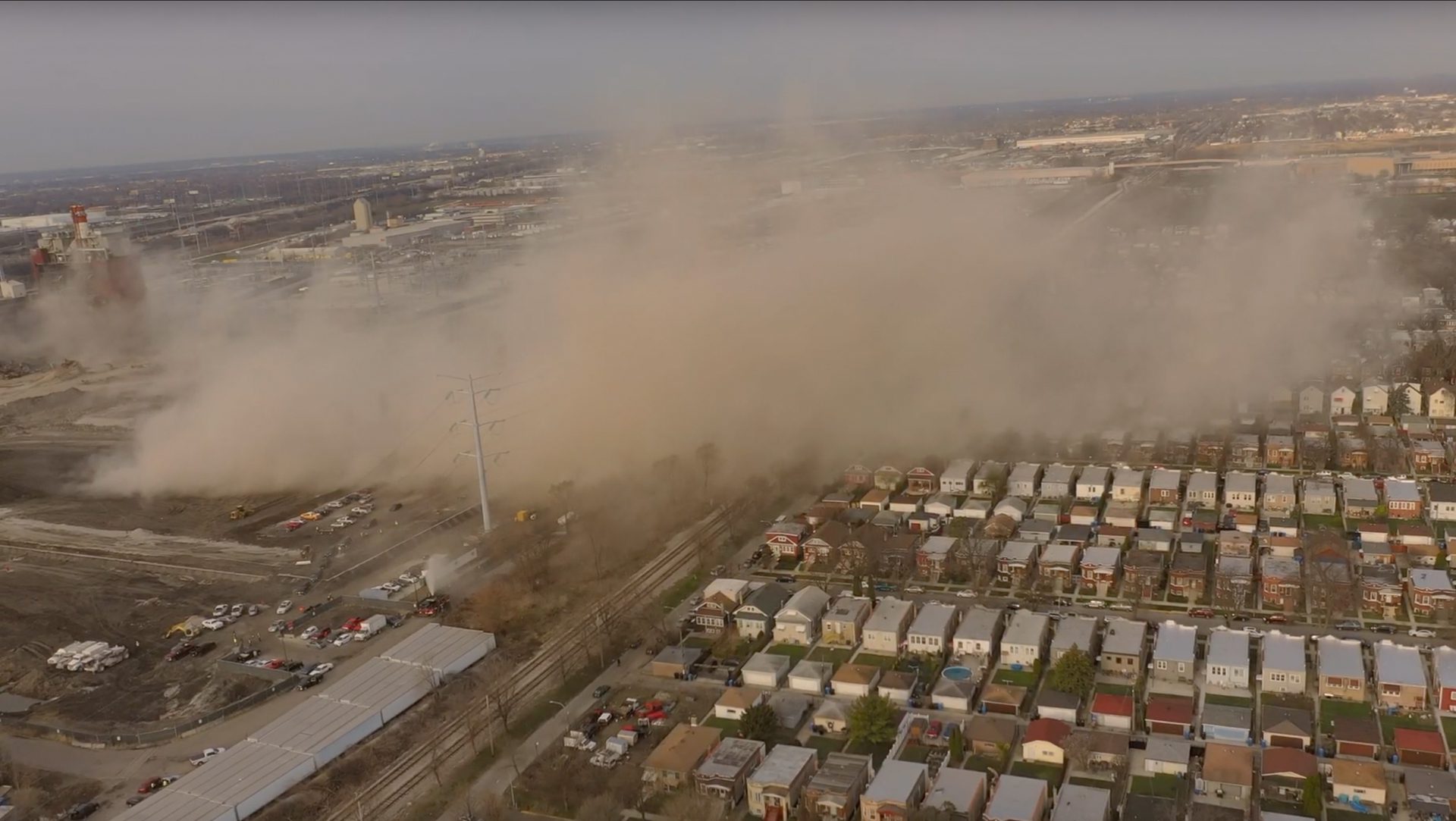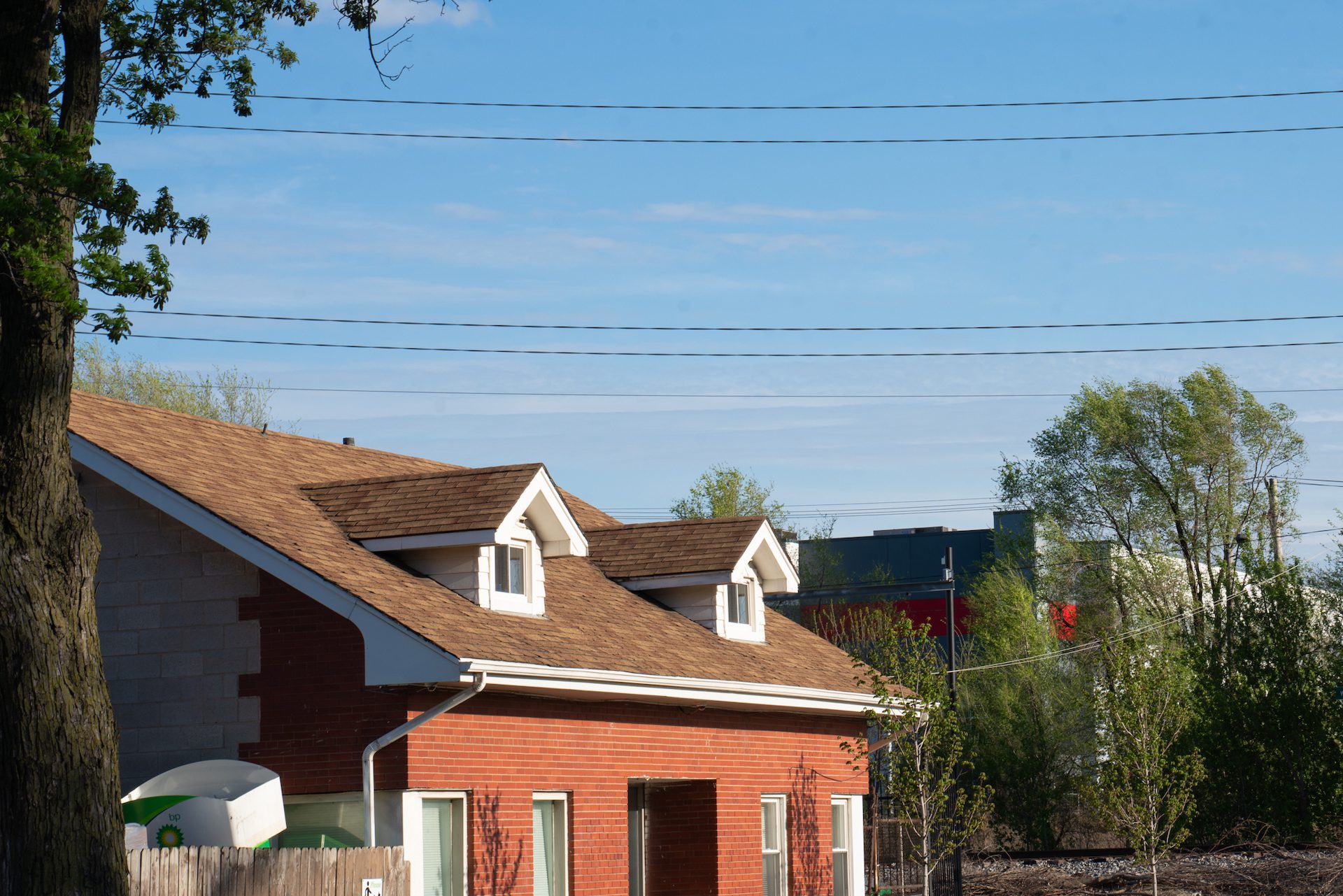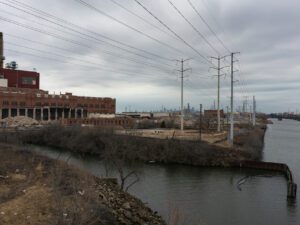 Camilla Forte for Borderless Magazine
Camilla Forte for Borderless MagazineDespite the settlement, Little Village residents still worry about the long-term health impacts of the implosion and the diesel trucks coming from the new warehouse.
Some Little Village residents can expect to receive part of a $12.25 million settlement for damages from the Crawford Coal implosion after a federal judge approved a final settlement agreement on Monday.
The settlement stems from residents’ federal class action lawsuit against Hilco Redevelopment shortly after the 2020 implosion. The lawsuit alleged that Hilco, which carried out the implosion of the coal plant’s smokestack, emitted a hazardous plume of debris and particulate matter into the neighborhood and showed a blatant disregard for the community’s safety.
News that puts power under the spotlight and communities at the center.
Sign up for our free newsletter and get updates twice a week.
Eligible residents had until February 26 to object and until March 26 to submit a settlement claim to receive cash payments of about $200 to $400.
No formal objections were made against the settlement, but two people spoke before the judge at the hearing. Elizabeth Rodriguez said she lived just outside the settlement’s geographic area and urged the judge to amend the boundaries so that she could be eligible for a settlement payment. She claimed her husband was suffering from Covid-19 at the time of the implosion and continues to struggle with breathing issues.
The other speaker raised concerns over the amount of outreach done to inform the many non-English-speaking residents in the neighborhood.
Attorney Scott Rauscher followed up by explaining the efforts made to inform and assist Little Village residents with submitting a claim, including mailing forms, hosting events, and setting door-hangers in homes.
The judge gave the final approval as is. Eligible claimants will receive the payment in late June, according to the settlement website.
After the hearing, Kim Wasserman, executive director of the Little Village Environmental Justice Organization, LVEJO, emphasized that the settlement falls short of what’s necessary. She urged the release of the inspector general report and demanded increased accountability from the city. “Our community deserves to heal,” she said.
Read More of Our Coverage
The coal plant was once hailed as a beacon of economic prosperity in the community. However, its status shifted as it became known to residents as a source of environmental and health hazards for the surrounding area.
In 2012, the coal plant shut down after years of advocacy from residents. Six years later, the city approved Hilco’s plan to build a Target warehouse in its place. Residents continued to push back, worried that the new development would bring diesel truck traffic, adding to the environmental and health hazards.
An analysis by the Guardian last year found that Chicago’s South and West Sides — parts of the city with the highest Black and Hispanic population — were among the worst places in the country to live for air pollution.
On the Easter weekend of 2020, Little Village residents were shocked to see their neighborhoods shrouded in dust. The particles came from the implosion of an old smokestack in the retired Crawford Coal Plant.
“It was an out-of-body experience,” said Alexandra Perez, a resident who filed for a claim. “We were freaking out because you didn’t know what was going on. I guess you never are prepared for situations like that.”

Edith Tovar, an organizer with LVEJO, said she continues to hear stories from residents four years later about health issues some still face that started during the implosion, including persistent coughs.
Little Village resident Irma Morales said the implosion, which was carried out at the start of the COVID-19 pandemic, heightened her anxiety, leaving her with headaches that persisted for months. Morales also filed for a claim.
In the wake of the implosion, the city’s inspector general investigated the botched implosion. According to the leaked watchdog report in 2022, the city’s “negligence and incompetence” allowed the dust to envelop the neighborhood. City officials knew about the “cataclysmic” impact of a nearby coal plant implosion but did not stop it. The city has not officially released the report despite calls from residents to release it.
Morales and Perez filed claims and could receive a payment from the settlement in the summer. Still, they say they know that environmental issues and a lack of community input in nearby developments continue to plague their community.
With the lawsuit against Hilco ending, Perez says it feels like that chapter is finally closing, but issues stemming from the site continue. “Every time we put a bandage on one of the concerns at Little Village, we seem to have another open wound come up,” she said.
A Target distribution center now sits in place of the coal plant. Some residents are dismayed by the facility and say it’s a constant reminder of how developers and the city ignored the community’s wants and needs. Morales has contemplated moving out of Little Village, saying neighborhood residents still don’t have enough say in what gets built near their homes and the city does not take their concerns seriously when considering new developments in the neighborhood.

While the warehouse has brought jobs to the Southwest Side neighborhood and is the largest industrial facility in the city with LEED certification, some residents say the development worsened heavy-duty truck traffic.
Last year, Target added a fleet storage yard to the site. Many nearby residents also opposed the expansion, concerned about increased pollution from the trucks that drive by their homes. According to environmental justice data collected by the EPA, the neighborhood sees levels above the 90 percentile in the country for diesel particulate matter pollution.
LVEJO and community leaders partnered to gather diesel truck data at intersections in Chicago known for trucking activity. They found that the intersections near the warehouse have some of the highest truck counts of the 35 intersections studied, with 5,000 trucks recorded in an intersection just south of the facility in Archer Heights.
Perez, who grew up in Little Village and is now raising her three children, wants more transparency and community engagement from city officials and companies coming to their neighborhoods.
“I don’t see myself anywhere else in the city, to be honest, than in Little Village,” she said. “I’m hoping that my children stay in Little Village and continue to fight for what is our community.”


